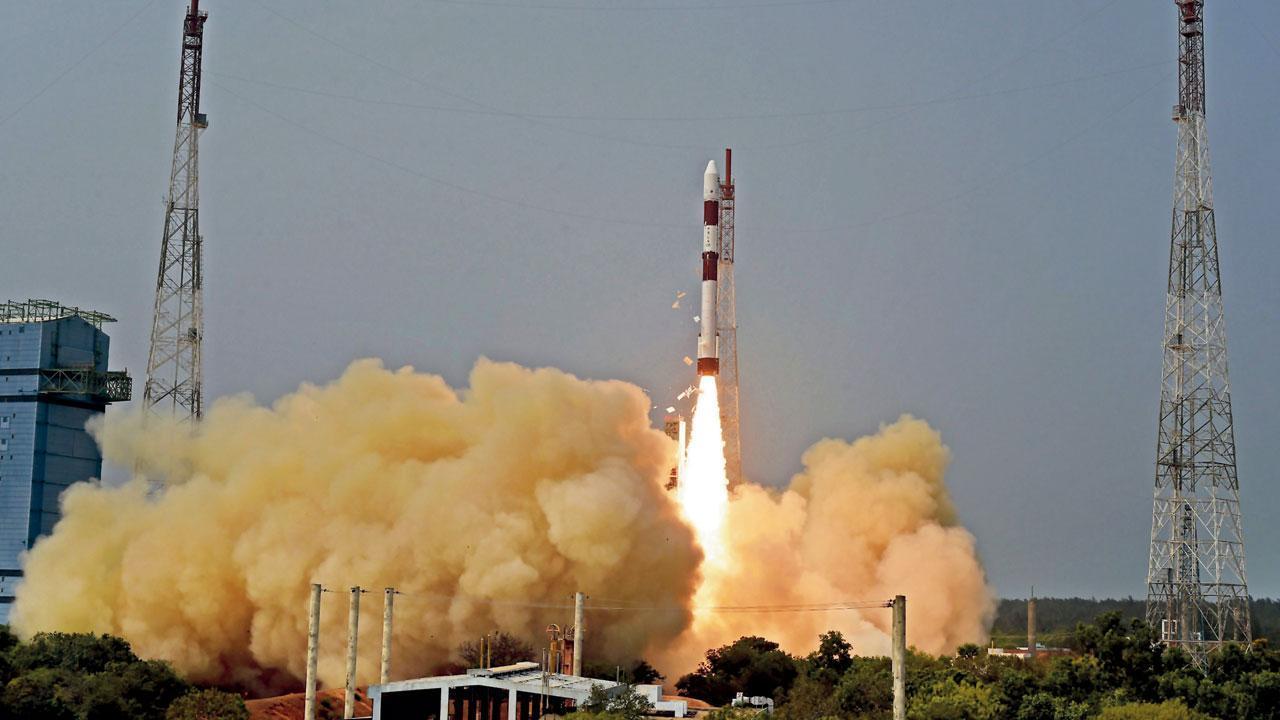The Bengaluru-headquartered space agency has drawn up plans to launch a second generation navigation satellite series which would ensure continuity of NavIC (Navigation with Indian Constellation) services

Image used for representational purpose.
Indian Space Research Organisation (ISRO) scientists on Sunday commenced the 27.5 hour countdown for the launch of a navigation satellite on board a GSLV rocket here on May 29, reported PTI.
The Bengaluru-headquartered space agency has drawn up plans to launch a second generation navigation satellite series which would ensure continuity of NavIC (Navigation with Indian Constellation) services.
According to PTI report, the satellite would provide real-time positioning and timing services over India and a region approximately 1,500 km around the mainland.
The countdown for the lift-off commenced at 7.12am on Sunday, PTI quoted ISRO sources as saying.
The 51.7 metre tall Geosynchronous Satellite Launch Vehicle, on its 15th flight, would carry the navigation satellite NVS-01 weighing 2,232 kg on Monday at 10.42 am from the second launch pad at the Satish Dhawan Space Centre (SHAR) here, about 130 km from Chennai.
Nearly 20 minutes after the flight, the rocket is scheduled to deploy the satellite in a geosynchronous transfer orbit (GTO) at an altitude of about 251 km, ISRO said.
The NVS-01 carries navigation payloads L1, L5 and S bands and in comparison to the previous one, the second-generation satellite series would also carry an indigeneously developed Rubidium atomic clock.
"The L1 navigation band is popular for providing position, navigation and timing, services for civilian users and for interoperability with other GNSS (global navigation satellite system) signals," ISRO said.
The Rubidium atomic clock, indigenously developed by Ahmedabad-based Space Applications Centre is an important technology which only a handful of countries possess, it said.
Some of the applications of the NavIC series include terrestrial, aerial and maritime navigation, precision agriculture, location-based services in mobile devices and marine fisheries, among many others.
Monday's mission is the sixth operational flight of the GSLV with indigenous cryogenic stage. The mission life of NVS-01 is expected to be better than 12 years, ISRO said.
(With PTI inputs)
 Subscribe today by clicking the link and stay updated with the latest news!" Click here!
Subscribe today by clicking the link and stay updated with the latest news!" Click here!










